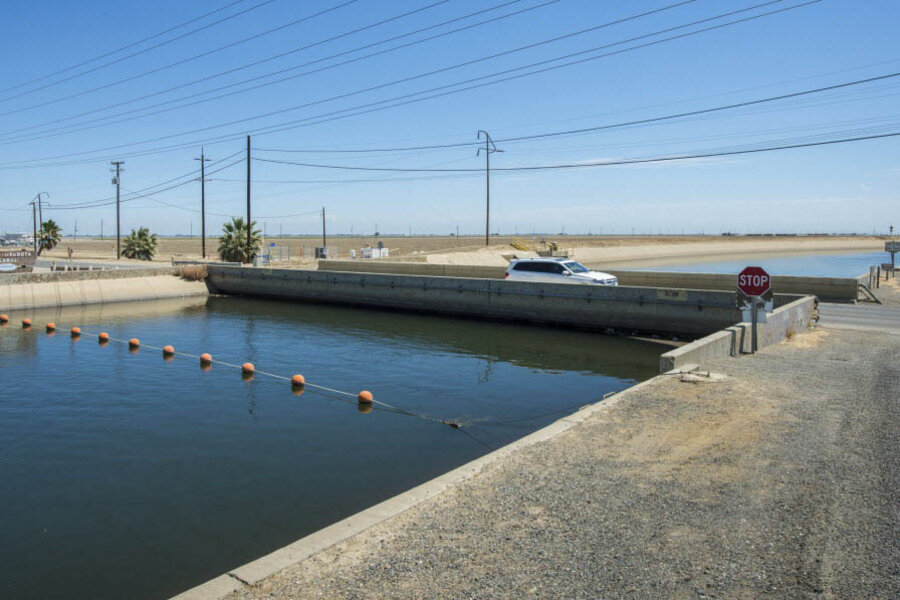California drought runs Central Valley towns into the ground ... literally
Loading...
The record-breaking drought in California has led to a sinking feeling in the Golden State’s Central Valley.
Thirsty residents of the valley have extracted increasing amounts of groundwater from the aquifer underneath the terrain in the region, which new data from NASA scientists say has led to some towns sinking at a rate of two feet per year.
"We are pumping at historic levels," said Mark Cowin, head of the California Department of Water Resources.
Researchers say this sinking – also known as subsidence – puts vital infrastructure like bridges, roads, and canals at risk. Scientists with NASA’s Jet Propulsion Laboratory measured the new rate of sinking by using images taken from satellites and airplanes.
While the rapid rate of groundwater extraction has led to sinking land in recent years, the new data gathered by researchers suggest that the rate of subsidence is happening at a quicker pace. Groundwater levels are also at record lows, with measurements of up to 100 feet lower than previously marked. The Central Valley, which is home to a large portion of the nation’s food crop, uses twice as much water as is naturally being replaced by rain and snow.
But even the increasing rate of groundwater drafting has not been enough to stave off the effect of the drought on farming. Around one-fifth more land is out of production this year when compared with last year.
The NASA data shows part of the massive California Aqueduct dropping eight inches in four months last year. The water source supplies millions of people and acres upon acres of farmland. Because of issues with subsidence, farmers in the Central California Irrigation District have been spending millions to raise canal walls and erect bridges.
"It's a vivid picture of what subsidence can do," said Christopher White, manager of the district that serves 1,900 farmers, who grow tomatoes, cotton, fruit, almonds, and other crops in three counties, in an interview with the Associated Press.
Subsidence has already led to closing of thousands of wells in San Joaquin Valley and over time, the phenomenon has been shown to permanently reduce underground aquifer capacity by squeezing out storage space for water.
An earlier study conducted by NASA in 2014 showed that besides the problems associated with land sinkage, rapid groundwater extraction raises the possibility that shifting geological features underneath the ground could lead to a major earthquake in central California.
In order to try and curb the sapping of the state’s aquifers and slow the rate of subsidence, Democratic Gov. Jerry Brown’s landmark drought legislation last year requires monitoring groundwater pumping.
But like most aspects of the water conservation law, it takes a longterm view of the drought situation and gives local officials years to write their groundwater management plans.
In the meantime the Department of Water Resources is launching a $10 million program to help counties with stressed groundwater basins to develop conservation policies and strategies.
"I don't think we can end overdraft or subsidence overnight," Mr. Corwin told AP. "We do need to take action."
Lester Snow, executive director of the California Water Foundation, which promotes water policy, urged more immediate action underscored the need for immediate action calling on government officials to provide incentives to taper reliance on groundwater.
"As long as this continues, we risk further damage to roads, levees, and buildings," he said. "There is no time to waste."
This report contains materials from the Associated Press.








